It seems like social media marketing is a puzzle nowadays.
Unlike SEO or paid search, social media is a hard road to navigate for a lot of businesses.
Even major ones.
Just check out this post from the insurance provider, Progressive.
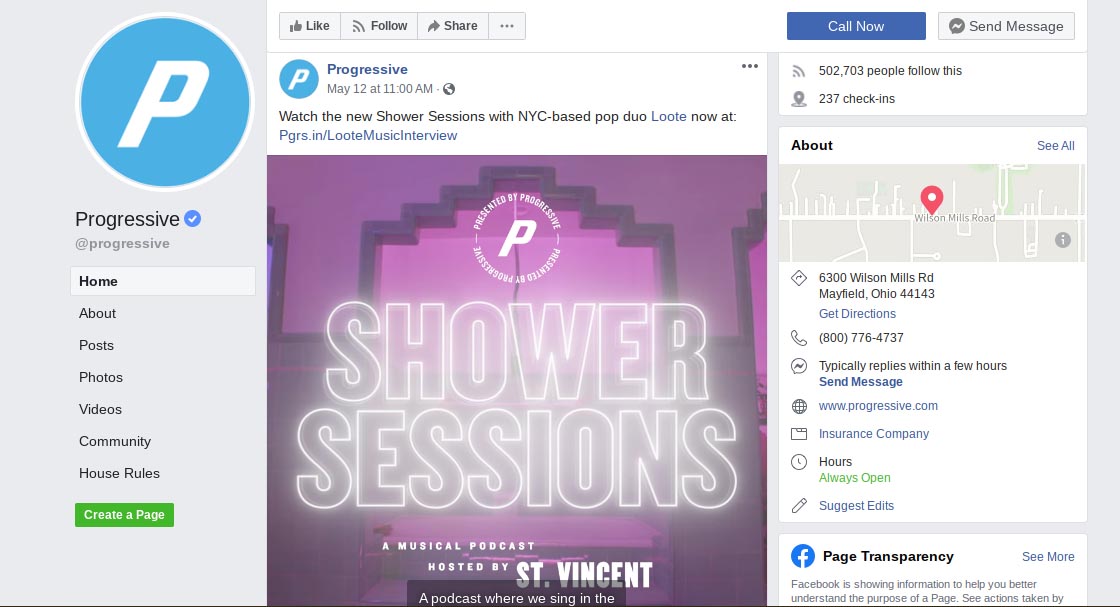
Looks pretty decent, right?
Wrong!
Take a look at the first comment.
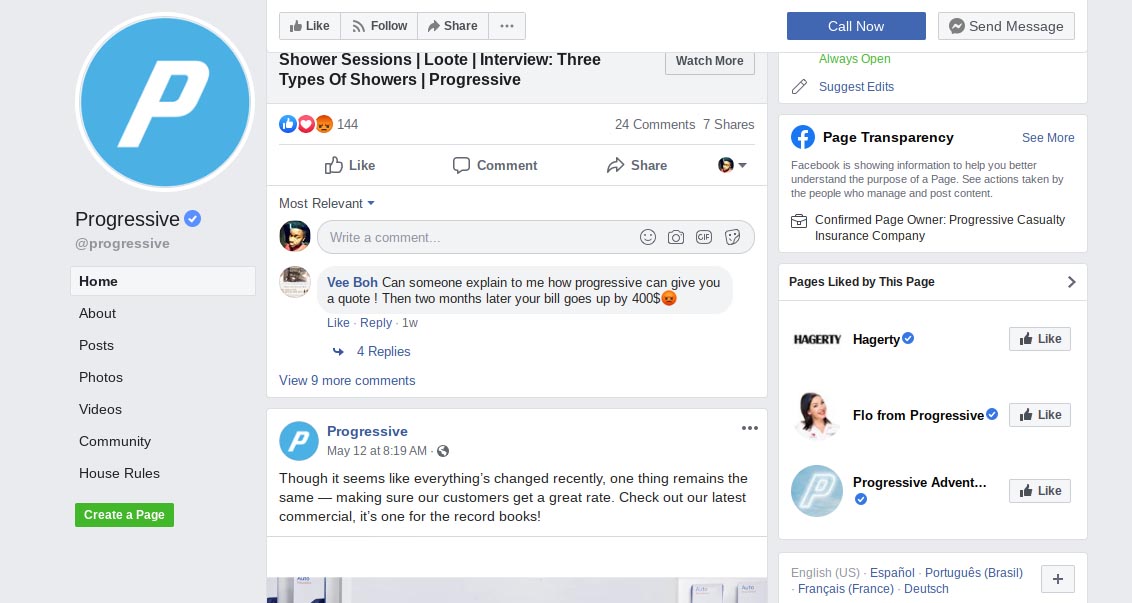
Yikes...
That doesn’t look good for the first comment.
Also, 24 comments and 7 shares are just pitiful.
We’re not being too critical on Progressive’s social media profile.
But, compared to Geico, they just aren’t cutting it.
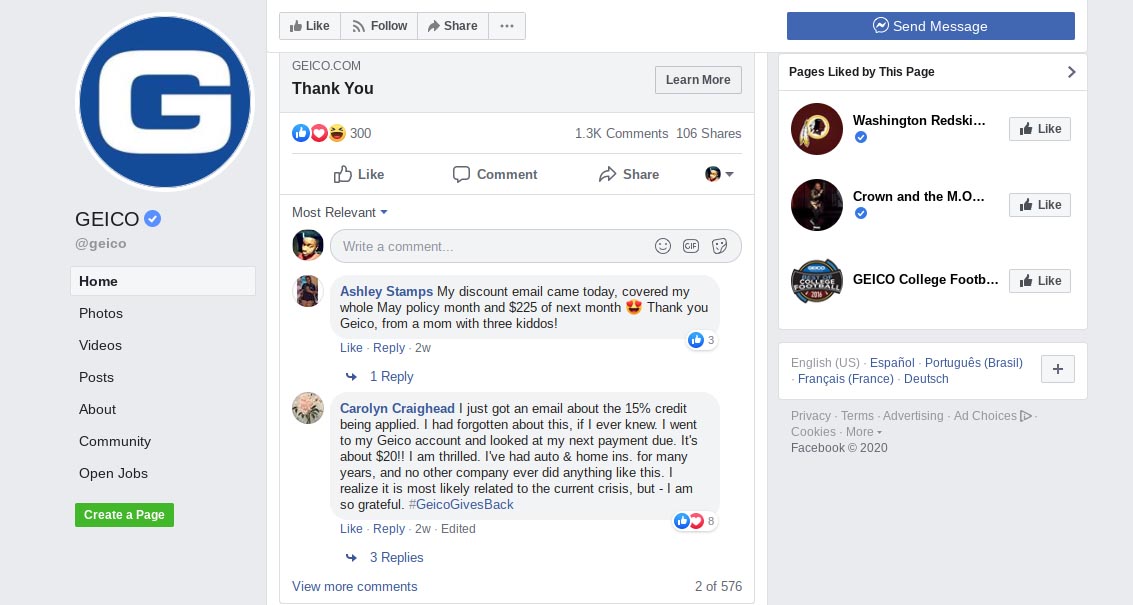
Not only does Geico have over 1,000 comments, but they have over 100 shares as well.
Also, take a look at the comments.
Those certainly look like the comments from satisfied customers.
In any case, many businesses fail at social media marketing because they don’t really know what it entails.
This guide will go over all of the things you need to know about social media marketing in 2020.
Social Media Marketing 101
Social media marketing is the process of producing high-quality content to promote your business on social media platforms, such as Facebook, Twitter, and Instagram.
The challenge of social media marketing is to tailor your message across each platform.
Thus, social media marketing is all about meeting prospective customers where they are and encouraging them to interact with your brand and each other.
Although social media marketing is incredibly beneficial to the growth of your online presence, your strategy will depend on the social networks that your target audience spends the most time on.
Before, we discuss how you can build your custom social media marketing strategy, let’s break down each platform.
Facebook:
- Users: 2+ billion
- Audience: Millennials and Generation X
- Industry Category: B2C
- Ideal for: Advertising, Brand Awareness.
Twitter:
- Users: 300+ million
- Audience: Millennials
- Industry Category: B2C and B2B
- Ideal for: Customer Service, Public Relations
Instagram:
- Users: 1 billion
- Audience: Millennials
- Industry Category: B2C
- Ideal for: User-Generated Content, Behind-the-Scene Posts, Natural Media, Advertising
LinkedIn:
- Users: 600+ million
- Audience: Millennials, Baby Boomers, Generation X
- Industry Category: B2B
- Ideal for: Employment Scouting, Business Growth, Business Partnerships
YouTube:
- Users: Nearly 2 billion
- Audience: Millennials and Generation Z
- Industry Category: B2C
- Ideal for: How-to Videos, Entertainment, Brand Awareness
Snapchat:
- Users: 300 million
- Audience: Generation Z
- Industry Category: B2C
- Ideal for: Advertising, Brand Awareness
Pinterest:
- Users: 250 million
- Audience: Baby Boomers and Generation X
- Industry Category: B2C
- Ideal for: Inspiration, Visual Advertising
This will save you a lot of time in choosing the social media networks that align best with your social media marketing strategy.
Generally speaking, if you want to advertise your products and services, Facebook is an excellent option.
Though, if you want to network and market your services to professionals, LinkedIn is a great choice.
The crux of social media marketing is knowing which social media networks to pay attention to.
You wouldn’t believe it, but we’re almost at the end of this guide.
The last thing we want to show you is how you can begin getting results on your chosen platforms.
And, of course, we’re going to provide a lot of examples along the way.
Top Social Media Marketing Strategies in 2020
Creating an effective social media strategy ultimately takes a lot of preparation.
In 2020, the five most important social media marketing tips you should take into account are:
- Creating a buyer persona based on your audience.
- Determining which social media network(s) you’ll use.
- Producing engaging and valuable content.
- Develop a schedule for your posts.
- Measure your results and improve.
All of this may sound a bit overwhelming if you don’t know a thing about large-scale marketing.
But, we’re going to break this down very simply for you.
1. Creating a Buyer Persona Based on Your Audience
Let’s start by defining what a buyer’s persona is. This is simply a representation of your ideal customer. For example, if your company sells modern joggers and leggings, then you can assume that your buyer persona is:
- Generation: Millennial
- Age: 26-35
- Income Range: $30,000 to $60,000
This is a very basic buyer persona, but it should give you a great idea of how to create one for your audience.
If you need more insight, take a look at this one:
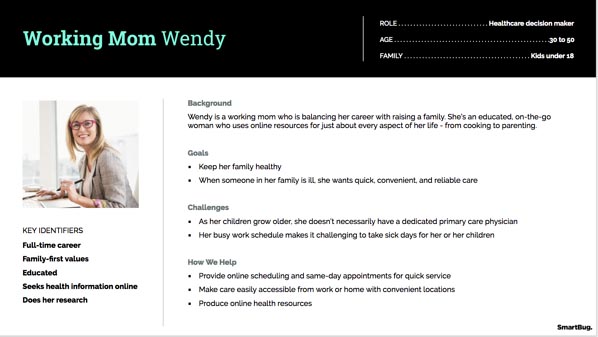
2. Determining Which Social Media Networks You’ll Use
Once you determine your ideal customer, you’ll need to figure out where to find them.
We created a helpful guide on the different social media platforms above, so you should have a great idea of which one to choose.
Using the previous example of the company selling joggers and leggings, Instagram would be a great selection.
Other e-Commerce companies can use Instagram to their advantage as this one did:
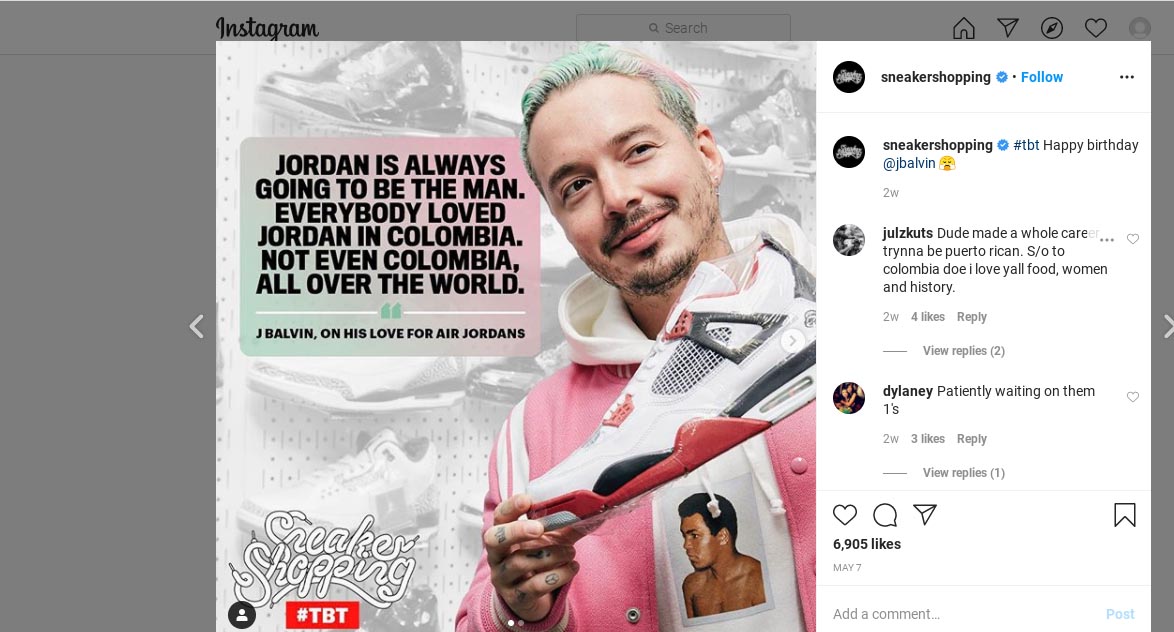
A post like this would only do this well on Instagram and maybe Facebook.
As you can see, choosing the right platform is key.
It’s all about knowing your target audience and selecting the right platform based on its general populace.
We did all of the leg work for you above.
3. Producing Engaging and Valuable Content
In this day and age, everyone has been on a social media network before.
When something grabs our attention, we stop and interact.
Knowing this, why do businesses always push out lame content like this:
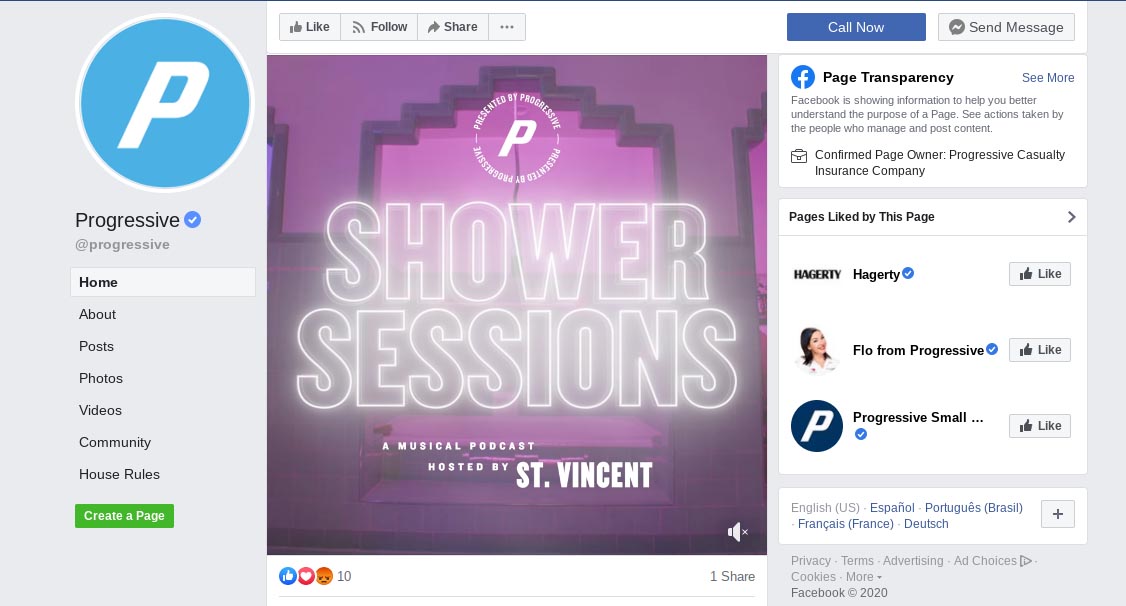
Sorry Progressive, but this isn’t going to cut it.
Common sense tells us that the same people who purchase insurance won’t want to sit by and listen to music that looks geared to younger Millennials.
Instead of creating content you think your audience will love.
See what your successful competitors are doing and adapt.
Remember, your content should do one or all of the following:
- Provide a statistic or helpful resource (LinkedIn, Twitter)
- Offer an enchanting visual (Instagram, Pinterest, Snapchat)
- Provide some comedic or entertaining value (Facebook, Twitter, Instagram)
4. Develop a Schedule for Your Posts
It’s unrealistic to manually post all of your content.
Instead, you’ll need to use a scheduling tool to plan your posts for specific days.
There are a number of post scheduling tools like Post Planner and HootSuite.
If you need help with figuring out the best times to post, then take a look at this infographic from CoSchedule.
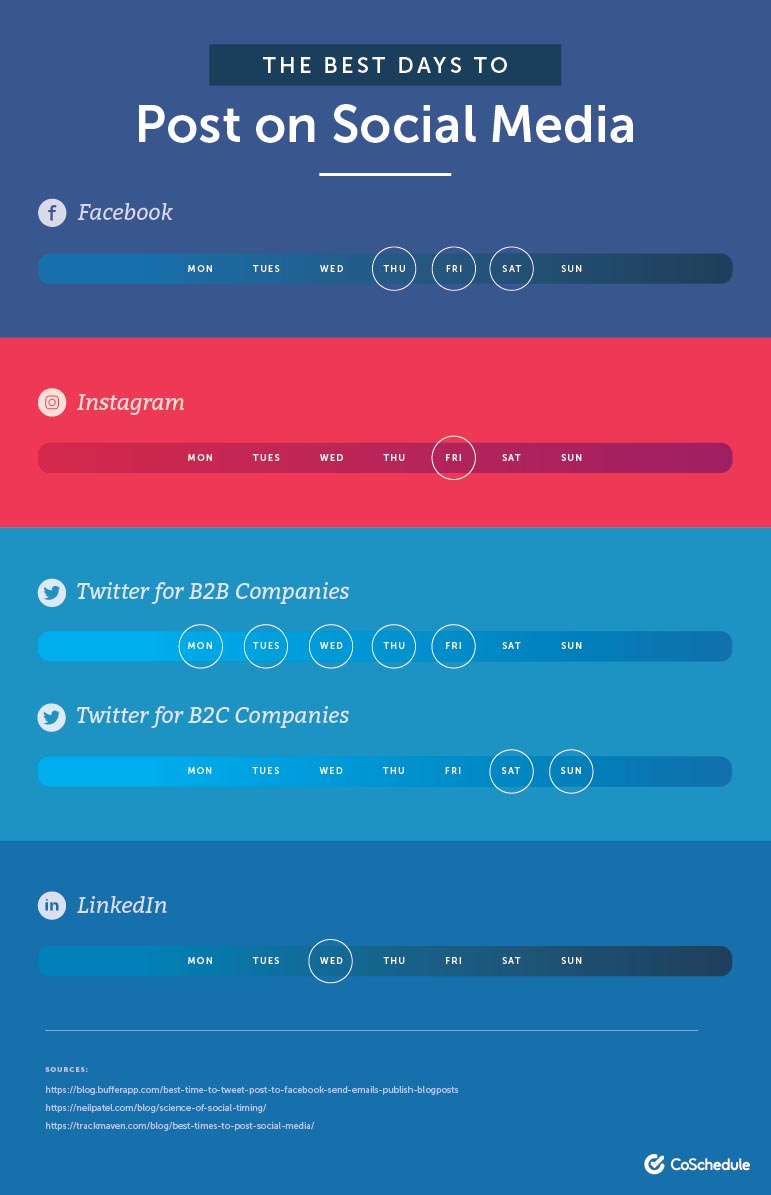
5. Measure Your Results and Improve
The last part of configuring your social media marketing campaign is measuring its results and improving it.
Luckily, all social media networks allow users to measure the engagement of individual posts and advertising campaigns.
Interpreting the data is another story.
If you want to make sure that you are optimizing your ROI correctly, then you should hire an experienced web agency.
And, that’s where Optuno comes in…
Let Optuno Improve Your Campaign
Social media marketing is a lot of work.
To make sure you aren’t wasting your time, effort, and money, you should work with a professional.
Optuno provides both Facebook Posting and Instagram Posting services.
We also offer Facebook & Instagram Ads Management services as well.
To speak to a member of our dedicated sales team, give us a call today at 1-888-678-8662 or click here to schedule a free consultation.



 View Printer Friendly Version
View Printer Friendly Version



